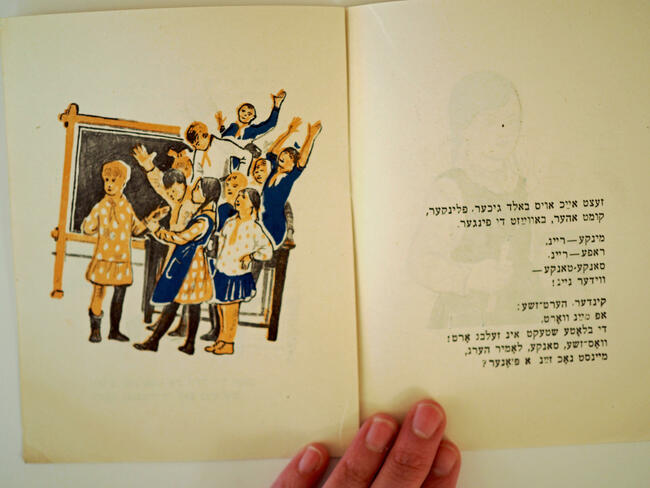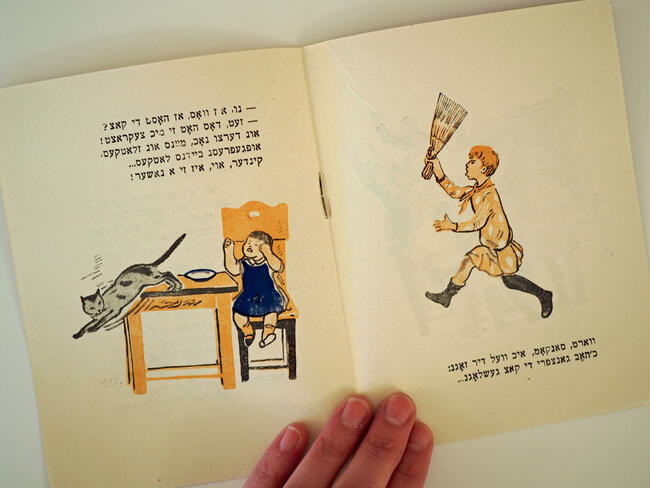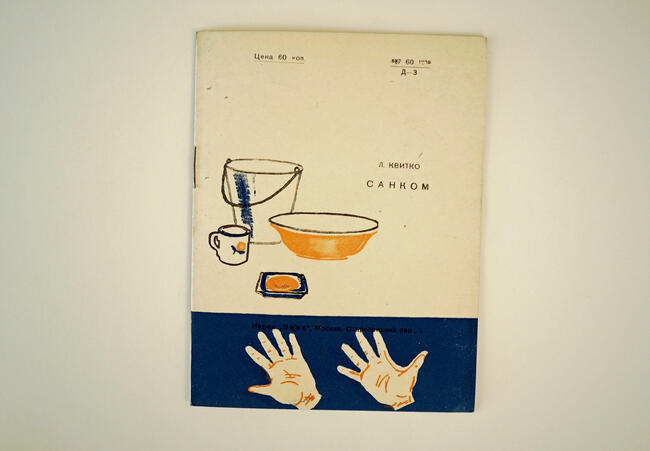A Soviet Children's Poem about Cleanliness
A few weeks ago, we found a small stack of colorful booklets with a young girl, a cat, and what looks like a tallis on the front. Intrigued, I brought the books to our weekly yidishkrayz (reading circle), when Yiddish Book Center fellows get together to read Yiddish texts. We soon learned that this book, titled Sankom, contained a strange little Soviet poem about cleanliness.

The story is about a young girl named Sanke who is, if you’ll pardon the pun, a mess. Part of the daily ritual at her school is to make sure that each student is adequately clean. They go down the lineup and read off everyone’s name. Manke, Rafe, and others pass with flying colors. But when it is Sanke’s turn, the response she gets is a solid “neyn!”
Everyone is very perturbed by the fact that Sanke is so dirty. When asked why she did not bathe that morning, she gives nothing but excuses. “Oh,” she says, “I couldn’t get clean because I was too busy.” What could a child possibly be busy with in the morning, you might ask? She was busy defending some freshly made latkes from her mischievous cat, who was trying to eat them. In a last-ditch effort to distract the cat from her very enticing latkes, she took the cat out back and beat it with a stick. It is because of this that she simply did not have enough time to wash up before school.

There is a lot to unpack here, but I think that the presence of animal abuse is the first thing we need to address. This stumped us, and not because it is particularly uncommon for animal abuse to appear in Yiddish texts. What confused us was the fact that it didn’t seem entirely necessary to the arc of the story—other than being a terrible excuse for being smelly at school.
While this book is fewer than twenty pages long, I have been thinking about it for weeks. This seems to be a pattern in my Yiddish life. I tend to really love the tiny books, mostly because they are incredibly portable, and I like to imagine the type of person who once owned the title. In the case of Sankom, I’d like to think these booklets once lived in a school, and students read it at the beginning of each year as a reminder of the expectations of their presentation every day.

—Alexis Aaeng
